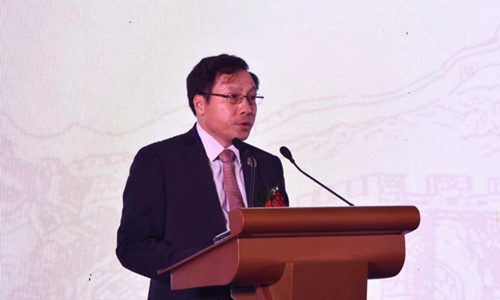China, Myanmar to sign agreements
By Li Xuanmin and Xie Jun
Upcoming state visit expected to deepen ties in many sectors

President Xi Jinping’s scheduled state visit to Myanmar this week will deepen the two Asian economies’ ties in such sectors as seafood exports, energy, basic infrastructure, finance and other labor-intensive industries, serving as drivers to fuel Myanmar’s economic development, business representatives and industry observers said.
Xi will make the visit to Myanmar from Friday to Saturday at the invitation of Myanmar President U Win Myint, China’s Foreign Ministry announced. It will be Xi’s first state visit of 2020 and also the first state visit to Myanmar by a Chinese president in 19 years.
As China and Myanmar’s economies are complementary, the long-awaited state visit will stimulate the two countries to take a new step toward further economic cooperation, Chinese observers said.
Under the Belt and Road Initiative (BRI) and the advance of the China-Myanmar Economic Corridor (CMEC), “No matter how Myanmar’s internal situation changes, Chinese firms remain the top investors in Myanmar in terms of cumulative foreign direct investment,” Liu Yin, chairman of the Myanmar-China Entrepreneur Association, told the Global Times.
Chinese landmark projects under the BRI include the China-Myanmar oil and gas pipeline, which allows China to import crude from the Middle East without passing through the Malacca Strait, as well as the Letpadaung Copper Mine, a mutually beneficial project jointly built by companies from China and Myanmar.
As a number of BRI infrastructure projects that boost connectivity are in full swing, trade between China and Myanmar will see a new increase this year, according to Liu.
He said that seafood exports may be the next growth point for bilateral trade.
“With a 2,000-kilometer coastline, Myanmar’s aquaculture industry is growing very fast. If its infrastructure improves and transportation times are reduced, more seafood products such as fish and shrimp will be sent to China,” Liu said.
In the first nine months of 2019, bilateral trade grew 17.9 percent year-on-year to $13.54 billion, according to data from China’s Ministry of Commerce. China mainly exports industrial products to Myanmar, while Myanmar ships natural gas, oil, rice, soybeans, meat and fruits to China.
Gu Xiaosong, an expert on Southeast Asian studies at the Guangxi Academy of Social Sciences, suggested that China and Myanmar could also cooperate more in processing industries, such as the processing of agricultural products.
“With vast cheap land, Myanmar is looking to develop its processing industries to boost its economy. At the same time, many Chinese companies are thinking of moving their manufacturing to Southeast Asian countries,” Gu told the Global Times on Monday, January 13. “Why not choose Myanmar as a destination along with their past choices like Vietnam?”
Analysts said that a flourishing relationship involving the BRI and CMEC will be a game changer, helping Myanmar fully leverage its geographic advantage and population dividends. “In such a way, the nation could speed up its economic development and improve living standards,” Liu noted.
Khin Maung Lynn, joint secretary of the Myanmar Institute of Strategic and International Studies, told the Global Times that the BRI may even pave the way toward peaceful settlements of disputes and help solve internal conflicts in Myanmar.
Myanmar is now one of the poorest countries in Asia. Last year, its GDP stood at $71.21 billion, which compared with GDP of 1.79 trillion yuan ($259.35 billion) in bordering Southwest China’s Yunnan Province.
Being the most southwestern province in China, Yunnan has an area of 394,100 square kilometers and a population of about 46 million. Myanmar is the largest of the mainland Southeast Asian states by area, with an area of 676,578 square kilometers and a population of about 54 million.
But giving the full picture of the benefits of BRI projects to local people remains a challenge, industry insiders warned.
“Some locals could be easily misled by the so-called debt trap or China Threat created by some Westerners and non-governmental organizations. Facilitating mutual understanding is an urgent task for us,” Liu said.
Source:Global Times












